
part of the probert group01277 636377 / 01277 657904 / 07809 554486
view our turfing options
Multi-purpose premium compost
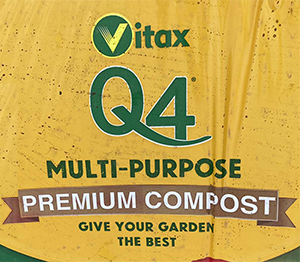 classic
classic
38mm pile height grass with Micro Nerve shaped blades. Natural looking, very dense and soft to touch.
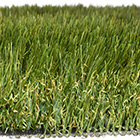 classic
classic
Product application: Gardens, terrace & roof gardens, patio & decking, play areas, pool surrounds, municipal landscaping
Pile height mm ±5%: 38
Gauge: 5/16"
Production method (DIN61151): Tufted
Stitches for 10 cm +/-1: 23
Stitches for m2 approx: 28,980
Total weight gr/m2 +/-5%: 2,895 gr/ m2
Water permeability (P 90107requirements>63 l/h): 60 litre/min
Composition: PE Monofilament straight & PP Monofilament curled
Blade Type: Micro Nerve
Colour: 4-Tone
Primary backing: 100 % Polypropylene
Primary backing weight: gr/m2 +/- 8% 125 gr/m2
Backing: Latex
Backing weight: gr/m2 +/-10% 836 gr/m2
UV stability: 10 years
A superb high-end artificial grass with 38mm pile height and Diamond shaped blades, making the grass very soft. Density of approx. 25,200 stitches per m2.
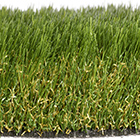 classic
classic
Product application: Gardens, terrace & roof gardens, patio & decking, play areas, pool surrounds, municipal landscaping
Pile height mm ±5%: 38
Gauge: 3/8"
Production method (DIN61151): Tufted
Stitches for 10 cm +/-1: 24
Stitches for m2 approx.: 25,200
Total weight gr/m2 +/-5%: 2,978 gr/ m2
Water permeability (P 90107requirements>63 l/h):60 litre/min
Composition: PE Monofilament straight & PP Monofilament curled
Blade Type: Diamond Shaped Blades
Colour: 4-Tone
Primary backing: 100 % Polypropylene
Primary backing weight: gr/m2 +/- 8% 200 gr/m2
Backing: Latex Backing weight: gr/m2 +/-10% 1,000 gr/m2
UV stability: 10 years
An extremely fine leaved but durable turfgrass blend creating a superb and versatile surface for most turfgrass applications including commercial landscapes, domestic lawns, golf courses, show gardens and tennis courts.
 classic
classic
| General Description | Characteristics | Typical Seed Mixture | Mowing | Nutrition |
|---|---|---|---|---|
| An extremely fine leaved but durable turfgrass blend creating a superb and versatile surface for most turfgrass applications including commercial landscapes, domestic lawns, golf courses, show gardens and tennis courts. | Classic Turf gives super sward density and cleanness of cut, fast establishment with superior tensile strength combined with high drought and wear tolerance. Bargold has great shoot density and blends very effectively with the fescues in the mixture | 45% Bargold - fine dwarf perennial ryegrass - lolium perenne 35% Viktorka - slender creeping red fescue - festuca rubra litoralis 20% Sergei - strong creeping red fescue - festuca rubra rubra |
Bargold can be mown as low as 6mm with a well adjusted cylinder mower. But it can also be maintained at a height of up to 50mm should it be required. Rotary mowers are the best option for heights of cut above 20mm. The key to maintaining quality is to mow regularly, and never to take more than a quarter of the leaf off at any one time. The longer the grass, the better the turf can cope with adverse weather conditions. | Classic Turf can survive happily on low fertiliser regimes and usually requires a maximum of 150kg Nitrogen per ha per year. This can be provided by two applications of fertiliser - one in the spring and one in the autumn - April & September. |
A very vigorous turfgrass blend. Ideal for winter sports fields and areas of extreme wear and tear such as football, rugby and natural grass thoroughfares and grass airfields. This turfgrass is not matched to any other turf mixture for applications that require grip, great looks, disease tolerance and versatility.
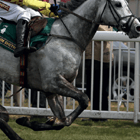 classic sports
classic sports
| General Description | Characteristics | Typical Seed Mixture | Mowing | Nutrition |
|---|---|---|---|---|
| A very rigorous turfgrass blend. Ideal for winter sports fields and areas of extreme wear and tear such as football, rugby and natural grass thoroughfares and grass airfields. | Classic Sports which contains a high percentage of perennial ryegrass meets the demands of football, rugby and other high intensity sports where traction is required under foot. The cultivars of ryegrass we use in Classic Sports Turf have performed well in intensive wear trials at the Sports Turf Research Institute, Bingley. | 25% Bardorado - perennial ryegrass - lolium perenne 25% Barillion - perennial Ryegrass - lolium perenne 25% Miracle - smooth stalked meadowgrass - poa pratensis 25% Sergei - strong creeping red fescue - festuca rubra rubra |
This mixture can be mown as low as 15mm with a well adjusted cylinder mower. The key to maintaining quality is to mow regularly, and never to take more than a quarter of the leaf off at any one time. The longer the grass, the better the turf can cope with adverse weather conditions and high wear. | Classic Sports can survive happily on low fertiliser regimes and usually requires a maximum of 150kg Nitrogen per ha per year. This can be provided by two applications of fertiliser - one in the spring and one in the autumn - April & September. |
A fine leaved turfgrass creating a superb and versatile surface for golf, bowling greens and ornamental landscapes.
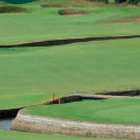 masters
masters
| General Description | Characteristics | Typical Seed Mixture | Mowing | Nutrition |
|---|---|---|---|---|
| A fine leaved turfgrass creating a superb and versatile surface for golf, bowling greens and ornamental landscapes. | Masters 100% Fescue gives a dense, consistent sward, with the fineness of leaf expected of a high quality turfgrass. Slender creeping red fescue has a good colour during the summer, autumn and early winter. It also has excellent salt tolerance and a rhizomatous growth habit. | 25% Barcrown - slender creeping red fescue - festuca rubra litoralis 25% Viktorka - slender creeping red fescue - festuca rubra litoralis 25% Bargreen II - chewings fescue - festuca rubra commutate 25% Barswing - chewings fescue - festuca rubra commutate |
Fescues can be mown as low as 5mm with a well adjusted cylinder mower. For greens we recommend 5-8mm. For tees we recommend 10-12mm. In general, the longer the grass, the better the turf can cope with wear and tear. For bunker tops this turf is often left to grow without mowing to achieve a more natural festuca look. | 100% Fescue can survive happily on low fertiliser regimes and usually requires a maximum of 150kg Nitrogen per ha per year. This can be provided by two applications of fertiliser - one in the spring and one in the autumn - April & September. |
A deep rooting turf which has been specifically bred to be more tolerant of both drought and flood. It is very tough and recovers well from the hardest pounding in gardens and landscapes, on projects where quick establishment is needed and little irrigation is possible, in areas that are prone to occasional flooding and in salty places such as coastal areas and roadside verges. Its deep roots mean it is quick to self repair after damage from a variety of causes.
 really tough turf
really tough turf
| General Description | Characteristics | Typical Seed Mixture | Mowing | Nutrition |
|---|---|---|---|---|
| A very vigorous turfgrass blend. Ideal for embankment areas, salt air applications, dry and poorly drained areas and also grass thoroughfares. This turfgrass is not matched by any other turf mixture for applications that require really tough turf. | RTT is a broader leaved turfgrass in appearance and is proven to reach rooting depths of up to 1.5 metres in trials at the Sports Turf Research Institute, Bingley. RTT contains other tall fescue grasses which complement the rhizomatous growth habit of the RTF and a smooth stalked meadow grass. This element adds to the strength and density of this turfgrass. | 25% rhizomateous tall fescue festuca arundinacea 65% tall fescue - festuca arundinacea 10% smooth stalked meadow grass poa pratensis or 10% perennial ryegrass lolium perenne |
This mixture is more at home left at 25mm with a well adjusted cylinder mower. But it can also be maintained at a height of up to 80mm should it be required. Rotary mowers are the best option for heights of cut above 20mm. The key to maintaining quality is to mow regularly, and never to take more than a quarter of the leaf off at any one time. | RTT can survive happily on low fertiliser regimes and usually requires a maximum of 125kg Nitrogen per ha per year. This can be provided by two applications of fertiliser - one in the spring and one in the autumn - April & September. |